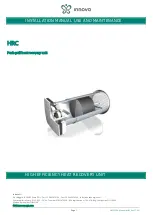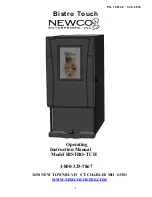
5. Operation
40
PNEG-2116
Bucket Elevator
EXAMPLE:
Gross truck weight with corn (56# PER BU) 35,000
Empty truck weight 10,000
Time from opening pit gate to pit empty 5 min
35,000 - 10,000 = 25,000 net pounds of corn
60 / 5 min = 12 (tf)
25,000 lbs. / 56 lbs per bu. x 12 (tf) = 5357 BPH
The following procedure can be used to give a reasonably accurate capacity indication for an elevator leg
when used
with a bulkweigh system
. For calibration without the use of a bulkweigh system, see the
previous page.
1. Make certain that the pit, all spouts, the leg and the bulkweigh system are all empty.
2. Start the elevator leg and make certain it is running properly and prepare bulkweigh system to receive
material. Load the pit but do not start the feed to the elevator.
3. Open the feed to the leg and start the timer.
4. After exactly 3 minutes, shut down the feed to the leg.
5. After the entire system empties, check the throughput on the bulkweigh system and use the formula
below to calculate BPH capacity.
1 lbs. through bulkweigh / lbs per bushel of material x 20 = BPH
OR
1 lbs through bulkweigh / lbs per cu ft of material x 20 = cu FPH
6. Repeat procedure, if necessary, to confirm results.
EXAMPLE:
Handling wheat @ 60 lbs per Bu.
After 3 min run, 35,000 lbs went through bulkweigh system
35,000 / 60 x 20 = 11,667 BPH
If Unable to Get Capacity
1. Check for obstruction in inlet spouts or boot hoppers.
2. Check slope of inlet spouts and hoppers. Should be 45° or greater.
3. Check height of boot inlet hopper, where grain entered boot, both up-leg and down-leg.
4. Check belt tension--adjust boot pulley take-ups.
5. Check position of pulley. Take-Ups may be carrying pulley too high for cups to dip into grain.
6. Varnished or painted cups must be given time to polish up for free grain discharge.
7. Check cups for caking or deformation.
8. Check head pulley RPM.






































